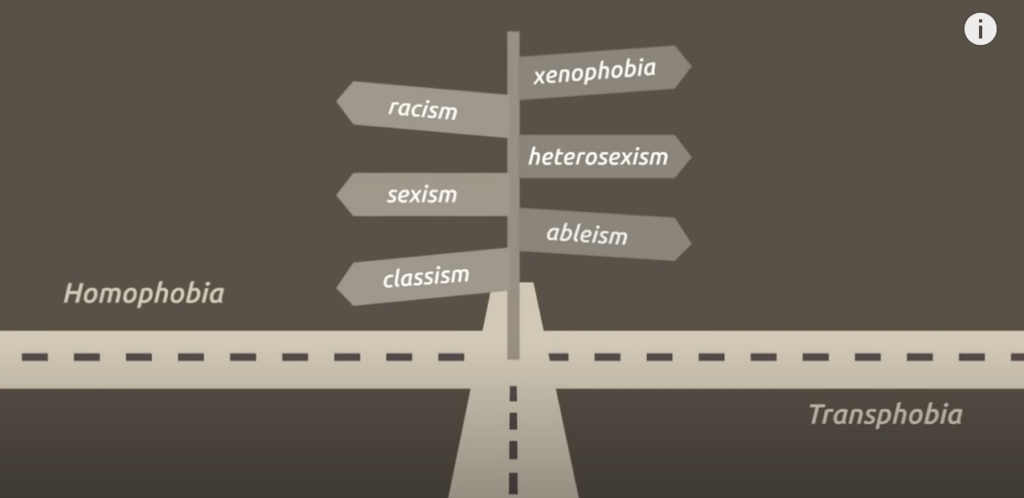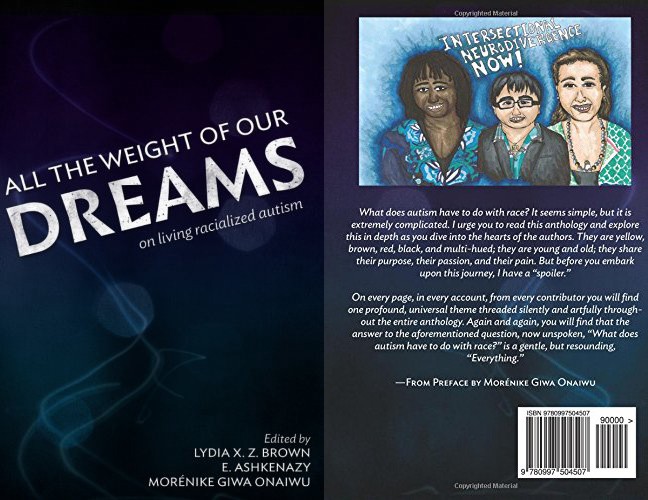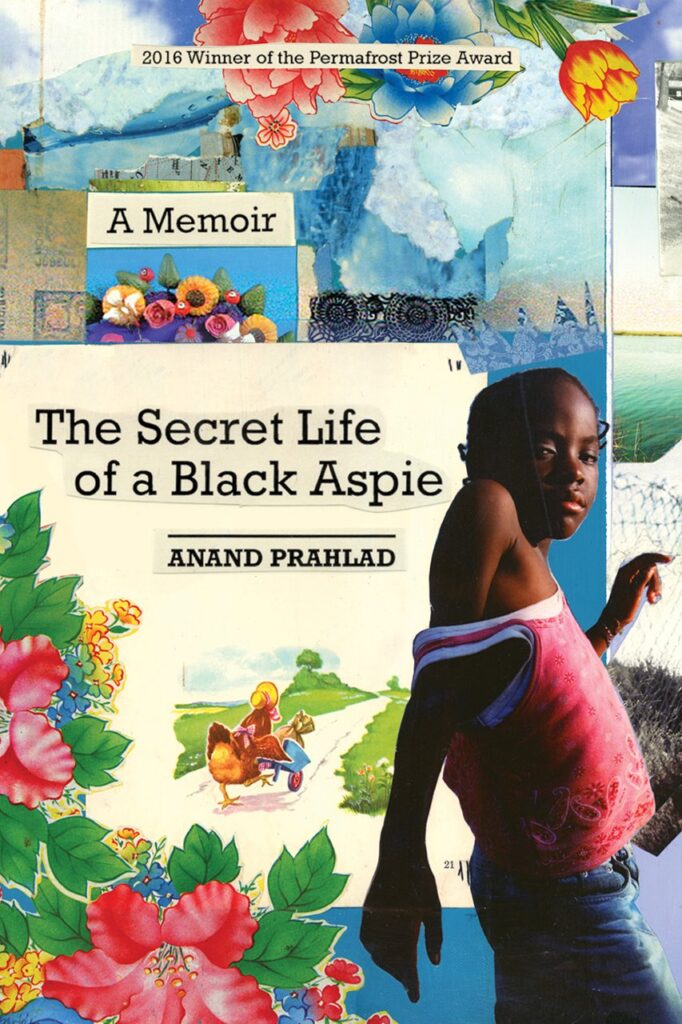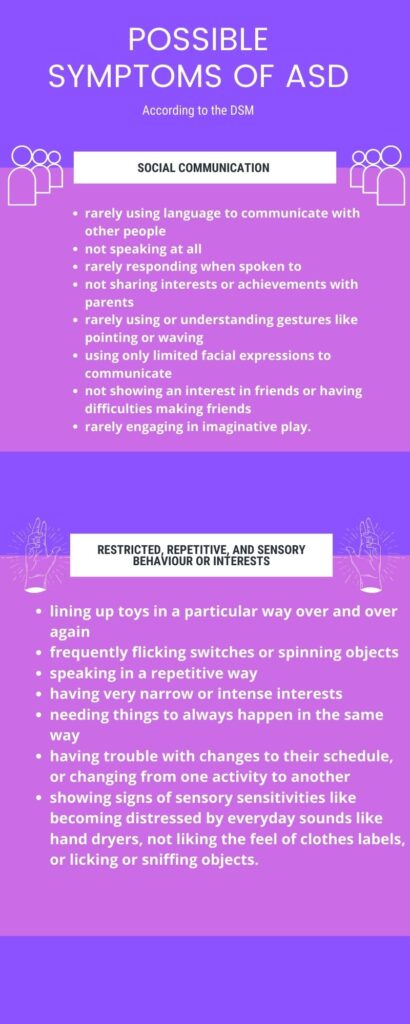
Black autistic women and girls are forced to deal with three types of structural inequalities at the same time:
Racism, Sexism, and Ableism
It is important to note from the beginning that this page does not speak for Black autistic women, since I myself am not a member of that community.
I am a white, non-autistic woman, but this spring semester (2021), I took a course about “Autistic Blackness” (AMST 440/880 at Trinity College, Hartford with Professor Diana Paulin, and this webpage is my final project for that class.)
My goal was to collect information and stories about Black autistic women, by Black autistic women, in order to uplift their voices and spread information.
There are also some sources included here from outside the Black autistic women’s community in order to help frame these experiences into a broader societal context.
Black autistic women and girls are habitually ignored and disregarded because there are two main misconceptions that society about Autism Spectrum Disorder:
- Autism only affects white people
- Autism is only a disorder in boys
Neither of these statements are true. They only exist due to the biased opinions of doctors and psychologists who historically only diagnosed white boys with the condition.
In a 2002 documentary, Refrigerator Mothers, Dorothy Groomer (a Black mother with a Black autistic son) explained that doctors refused to diagnose her son with autism because their family,
“did not fit their [autistic] mold…which is white, upper-middle class, and very, very bright.”
So, if a patient did not check all those boxes, doctors assumed they could not be autistic.
Although this occurred decades ago, the structural racism and biases in medicine against Black people, and specifically against the idea that Black people can have autism, still persists today and affects when and how Black children are diagnosed with ASD.
And since it was, and is, difficult for Black boys to be diagnosed with ASD, it is two times as difficult for Black girls because they are combating incorrect medical assumptions rooted in racism and sexism.
This underrepresentation of Black people, especially Black women and girls, with ASD perpetuates the lack of support and care the Black community has always faced from medical professionals, and society in general.
Black Lives Matter, including Black women and girls, Black autists, and Black woman autists.
We need to do a better job at listening, recognizing, and supporting this community who are fighting to stand up for their rights. They should not have to fight alone.
It’s not difficult to find more information about and from Black autistic women and girls. Social media, Google, and your local library are three great places to start educating yourself. This webpage only holds a fraction of the important information, and it’s vital to listen to the direct source, and not just a researched website collection.
What you fill find below are analyses of:
- CDC statistics about autism diagnoses across different races
- Kimberlé Crenshaw’s TedTalk on “The urgency of intersectionality”
- Three TikTok social media videos by three different Black autistic women discussing their experiences
- “Love is a Basic Science” from the collection of poems, She Has a Name, by Kamilah Aisha Moon
- Additional resources for Black autistic girls to connect more with their community, and other readers who want to expose themselves to different Black autistic perspectives and learn more
CDC Information & Statistics

The CDC has countless articles filled with research about ASD and the how the diagnoses differ between race and gender. As of 2016, the CDC found that ASD is “4.3 times as prevalent among boys as among girls” and that although,
“[there is] no overall difference between black and white children aged 8 year, the disparities for black children persisted in early evaluation and diagnosis of ASD.”
Evidently there is no scientific proof that Black children are less likely to have ASD, but there is a difference in race depending on how and when children get diagnosed. So Black children are not less likely to have autism, but they are less likely to be diagnosed with it.
A similar line can be drawn between more white children being diagnosed than Black children, and more boys being diagnosed than girls. Although studies now show that boys are much more likely to have autism, a few decades ago they said white children were much more likely to get autism.
So this begs the question, are girls really less likely to be autistic? Or are researchers and doctors just adhering to an old assumption?
Kimberlé Crenshaw and Intersectionality

Intersectionality is “a lens, a prism, for seeing the way in which various forms of inequality often operate together and exacerbate each other.” –Kimberlé Crenshaw
Kimberlé Crenshaw is a lawyer, philosopher, and civil rights advocate who coined the term “Intersectionality” in order to describe the cross over oppression certain people experience.

For example, we know that Black, autistic women and girls are subjected to racism, sexism, and ableism.
Crenshaw’s TedTalk helps to articulate why there is so little representation and common knowledge of Black autistic women and girls. Because she points out there is little representation of the oppression any Black woman experiences.
She uses police violence as an example:
“Everywhere the awareness of the level of police violence that Black women experience is exceedingly low”
Kimberlé Crenshaw “The urgency of intersectionality” (2:56)
It’s also important to remember that these Black women have been simply existing in their daily lives and have been killed regardless of what they’re doing.
“They have been killed, shopping while Black, driving while Black, having a mental disability while Black…They’ve been killed talking on the cellphone, laughing with their friends…They’ve been killed when they called for help”
KIMBERLÉ CRENSHAW “THE URGENCY OF INTERSECTIONALITY” (12:56-13:20)
Crenshaw explains that people can wrap their heads around police violence against Black people, and they can wrap their heads around violence against women, but they can’t combine the two. So violence against Black women remains unseen.
“There is no frame for us to see [Black women and girls], no frames for us to remember them…[and] without frames that allow us to see how social problems impact all the members of a targeted group, many with fall through the cracks of our movements left to suffer in virtual isolation”
KIMBERLÉ CRENSHAW “THE URGENCY OF INTERSECTIONALITY” (3:52-4:54)
Since society does not address the crossover oppression Black women and girls face, they are even worse at acknowledging the combined oppression Black autistic women & girls experience.
Black Autistic Women’s Voices

Putting Black Women in Boxes
This video is of a Black autistic woman explaining why Black girls and Black women are so rarely diagnosed with autism, because no matter how informed people are, it would be a stretch form them to see “beyond [Black autistic girls’] Blackness”
Racial bias and outright racism can stop Black women and girls from being diagnosed because they don’t fit the stereotypical autist mold.
Black women and girls are seen as “more grown” and so whenever they act in a non-neurotypical way, those symptoms are attributed to them just acting “more negative” or “intentionally harmful.”
But, as @butshealwayshungry points out, whenever white boys act out symptoms of autism, their actions are automatically assumed to be due to neurodivergence.
Ableism from a Total Stranger
This video is of a Black autistic woman who was harassed inside a fast-food restaurant because she brought her service dog in with her, in its little bag.
A woman started yelling at her she was disgusting and denied that she needed a service dog because there wasn’t visibly “anything wrong with her”.
This experience demonstrates ableism against individuals with neurological disabilities because the general public assumes if they don’t see a disability, it isn’t there.
We can also see how this situation supports Kimberlé Crenshaw’s point that Black women are targets of harassment and violence no matter what they are doing.
The Importance of Representation
This is a video of a Black autistic woman using a popular feminist sound on TikTok.
The music is used to emphasize the importance of neurodivergent POC being represented because it helps members of that community feel empowered to stand up and speak out.
@theimpeccablemartist is also all made up with hair, jewelry, and makeup. That is not the stereotypical image people have of autists, which supports her argument for broader representation.
“Love is a Basic Science” poem from She Has a Name by Kamila Aisha Moon


LOVE IS A BASIC SCIENCE They ran tests. Looked for reasons she learned like molasses. She didn’t like to be touched. Walked on her tiptoes everywhere, a braided ballerina in flip-flops or Keds. Our way of walking a plodding, ill-fitting gait that continued to confound. It wasn’t extraordinary in our minds to love her, to let her know, holding on until she squeezed back.
Kamilah Aisha Moon is a renowned writer, known for her impressive narration of the Black female autistic experience. This specific poem, “Love is a Basic Science” comes from her collection She Has a Name, which explores the feelings of a Black family with an autistic daughter. This book is a great way to listen to the thought processes and experiences of a Black autistic woman.
This poem specifically discusses the individualized learning ability and sensory symptoms the daughter has due to her ASD.
The last stanza also emphasizes how ASD children should still be treated with love and compassion from their families, and that it isn’t heroic to give your child love if they have ASD. You should love your child regardless, and treat them with human decency no matter their neurodiversity.
Additional Resources


“Autism in Black aims to provide support to black parents who have a child on the spectrum, through educational and advocacy services. Autism in Black is dedicated to bringing awareness to Autism Spectrum Disorder and reducing the stigma associated with ASD in the black community.”

All The Weight of Our Dreams by the organization autismandrace.com
“In June 2017, the Autistic Women and Nonbinary Network partnered with Lydia X. Z. Brown and published All the Weight of Our Dreams: On Living Racialized Autism, intended to be the first anthology of art and writing entirely by negatively racialized autistic people.”
Secret Life of a Black Aspie \ A Memoir by Anand Prahlad

“In 1954 a black boy is born on a former plantation in rural Virginia. He inhabits a magical inner world where sensory experiences blur together, time disappears, and memory is fluid. Nature offers both solace and adventure. Household objects possess agency and poetry. The spirits of slave children become his best friends. For the first four years of his life, he doesn’t speak. Then, slowly, he finds his voice.”
Written by autistic author, musician, and speaker Anand Prahlad.


